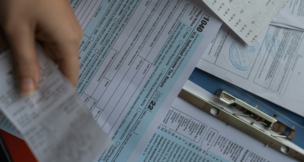Bar Codes Help DES Count Its Assets
Arizona Capitol Reports Staff//December 5, 2003//[read_meter]
Until recently, inventory trackers of the Department of Economic Security literally pounded the pavement in keeping up with the agency’s millions of dollars in assets.
In order to track items scattered among hundreds of offices across the state, controllers drove thousands of miles a year to the far-off corners of Arizona. Adequately cataloguing the department’s telephones, laptops, copiers and computer servers meant a worker could spend up to a year on the road.
That was then. Now, the department’s process of tracking inventory is very different and definitely more efficient, staffers say. Where once employees traversed the state searching for assets, today DES can track wares quickly and deliberately through a new bar-coding system designed by a Valley firm.
That firm is American Barcode, a Phoenix-based reseller of bar-coding technology. The company’s tracking system, adopted by DES in August 2002, allowed the agency to abandon its paper inventory process and move to a computerized system using handheld scanners and computer software. The process cuts the time needed to track equipment belonging to one of the state’s largest departments.
“(The American Barcode system) has allowed the unit to become more efficient in processing its annual inventories,” says Howell Lindsay, Administrative Services Officer with DES’ Division of Business and Finance. “Significant time-consuming data entry requirements have been removed.”
Improving The Inventory Process
Additionally, the system has improved the agency’s performance in terms of accuracy and the overall reliability of its inventory results.
For example, at the end of fiscal year 2002, the department could not completely account for approximately 1.3 per cent of its capital inventory at cost. In an agency of more than 10,000 employees using about $59 million in computers, vehicles and other assets, this was a noticeable number.
At the end of fiscal year 2003, however, the picture changed. DES saw its unaccounted-for inventory drop to 0.8 per cent. Also, the department was able to process over 25 per cent more transactions than were processed manually during the previous year. Mr. Lindsay credits the change to use of the bar code system.
By removing manual entry from the inventory process, the program “ensured that records are more accurate and current,” says Mr. Lindsay. The biggest savings is in time, he adds, with employees able to focus efficiently and completely on record keeping and on other aspects of their jobs.
DES employees oversee a number of elements of state government, with nine divisions that cover child support enforcement, services to the disabled and unemployment compensation, to name a few.
Previously, the department’s record keeping required extensive manual effort. In the old system, the agency would prepare inventory lists based on financial reports, with a department controller traveling the state in order to compare the master list with the capital assets of more than 300 offices.
Employees tracking goods then returned to the department to validate findings between projected and actual lists, often with inaccurate results.
“The new system allows the assignment of assets to department locations, removing this validation burden, and increasing the confidence level in accounts for all locations,” Mr. Lindsay says.
The revitalized tracking system was long overdue, he says.
Looking to make an impact was American Barcode, one of a number of companies that responded to the department’s call for a tracking system. The firm previously had created systems for other public agencies.
“We’ve been around for 23 years, and we basically grew up in the industry,” says Dan Trainor, regional sales manager for American Barcode.
The industry first emerged in the 1950s and was used in the 1970s at grocery chains. Today, bar coding technology is everywhere from libraries to the U.S. military, which equipped soldiers in Iraq with bar coded bracelets containing military histories.
The biggest users are government agencies. American Barcode had worked with a number of other government agencies including the Maricopa County Records Department and the city of Phoenix. DES was looking to join the list of those using the latest technology.
“We needed to do more with less, be more effective and more efficient,” says Mr. Lindsay. The agency’s goals were to speed the process, automate input and make the system more user friendly.
Because the agency needed to track inventory from hundreds of offices and relay data back to a mainframe, the DES project presented challenges, says Mr. Trainor.
To adequately access the department’s hundreds of sites, the company developed a solution using a laptop computer as a wireless server.
Using the laptop and a portable, hand-held computer, a DES employee can scan items and collect information in an instant. The scanner functions as a data collection tool and a transmission device, updating the database immediately.
Previously, discrepancies would not have been discovered until the tracker returned to the department to manually key in the information. “What we developed was a very unusual system that allows the agency to track inventory at all locations without the headaches and expense,” says Mr. Trainor.
“A reader reads through the label to a chip that holds up to 96 bits of information – not just a single ID number,” says Michael Stryczek, president of American Barcode Corporation. “You can have a whole manifest of information about a product available through the bar code.” For example, today’s libraries are using bar coding to track names, times, titles and locations of checkouts.
When DES first introduced the system, according to Mr. Trainor, the department was interested in tracking items at some 250 locations. Today, DES is using it at 350 sites — all without an increase in manpower.
Moreover, according to a report prepared by Kraves Ronstadt PR, the technology helped DES conduct inventories for approximately 70 offices that were deemed not cost-effective to visit in-person.
Technology Might Be Used To Track Weapons
Now, a number of other agencies are looking at the technology, according to Mr. Stryczek. In California, for instance, such devices are used for evidence tracking, while Arizona’s Department of Public Safety hopes to use bar coding to monitor weapons. “This may be coming in the future,” he says.
As for DES, the department recently added the system to its information technology receiving warehouse, with only minor system modifications and a modest price tag of $800 for software licensing, according to Mr. Lindsay.
“By adapting the system to our needs in this area, we are now able to bar code and capture asset receiving information that was previously handwritten on paper,” he says. “A recent order of 120 commodities that would have required up to two hours of staff time to prepare and submit for additional data entry was completed in approximately 20 minutes – all with a higher degree of accuracy.”
In total, the system is “both a time and money saver,” says Mr. Trainor. “You get your report out in a more timely fashion and more easily pinpoint the location of assets. Also, when you don’t have an asset tracking system in place, you’ll have theft, because people think it can’t be tracked. So it truly increases accuracy, efficiency and accountability.” —
FYI
American Barcode Corporation
4630 E. Elwood Street, Suite 1
Phoenix, AZ 85040
1-800-274-0324
480-894-5564
www.amerbar.com
DES/Division of Business and Finance
1717 W. Je
fferson, Site Code 812Z-1
Phoenix, AZ 85007
602-271-0597×7005

















